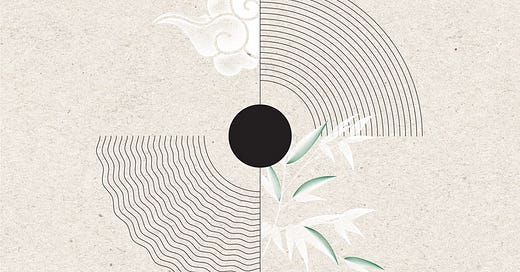What is sound wave therapy?
And what does a sound wave therapy album sound like? The TENG Company creative director Samuel Wong tells us
Here’s a quick definition of sound wave therapy, and an example of a sound wave therapy album, that’ll introduce you to its forms and possible benefits – and hopefully give you another option to de-stress.
If sound waves and sound wave therapy sound a bit woo-woo to you, hold that thought.
“Sound wave therapy is a practice that can influence the brain through brainwave entrainment for psychological benefits, such as relieving anxiety and enhancing memory,” says Dr Samuel Wong, the creative director of The TENG Company in Singapore.
Made up of music educators and instrumentalists, TENG is an arts non-profit that has been exploring and promoting Singaporean Chinese music since 2004.
But why explain the concept of sound wave therapy when Dr Wong and The TENG Ensemble can show it to you? Experience sound wave therapy TENG-style through their new album, Music for Mindfulness.
It’s a sound wave therapy album that stands out because of one feature: binaural beats.
“We’ve incorporated binaural beats – a form of sound wave therapy – to the music,” says Dr Wong.
“Binaural beats are an auditory illusion that occurs when pure tones of slightly different frequencies are played at the same time, yet perceived by the brain to be of a single tone.
“When used with music as a form of sound wave therapy, binaural beats may relieve pain or stress in listeners, helping to aid in their overall well-being involuntarily.
“The tracks are created with a dynamic progression from theta to delta waves to create a convenient, contemporary and easy listening experience, and help with unwinding after a busy day.”
How to create a sound wave therapy album
Music for Mindfulness “marks their foray into music for wellness”.
“The process of producing the album was challenging but enjoyable, but I would say that finding the sweet spot of using the album with binaural beats to help one practise mindfulness is my favourite,” says Dr Wong. Here’s what it took:
#1 Collaborate with the experts
“As a musician, I’ve always thought about how we can continually experiment and ‘break the boundaries’ of music to use it not just to entertain, but to give back to the community too,” he says.
“In the process of creating this album, we worked with the Singapore Institute of Technology to develop a study on the impact of binaural beats on state-anxiety levels.
“The positive correlations from the study confirmed that we are on the right track in creating music that can help listeners cope with stress and anxiety, while complementing medical forms of treatment.”
#2 Research and experiment
“I particularly liked seeing everyone, from music therapists and academics to the ensemble, come together with the same goal, which culminates in this new album that we hope can bring listeners the much-needed respite and relaxation they seek.”
How to start sound wave therapy
If you’re a newbie, the 10 tracks in Music for Mindfulness make it easy.
“Music therapy and the use of binaural beats can be seen as a self-help method, and we hope that this album will make it convenient for people to turn to this resource as a way to unwind.”

What a sound wave therapy album by The TENG Ensemble sounds like
Dr Wong describes Music for Mindfulness like this:
“It combines binaural beats and TENG’s signature East-West sound through an arrangement of the dizi (a Chinese flute), guzheng (a Chinese zither), pipa (a Chinese lute), erhu (a two-stringed Chinese fiddle), keyboard and acoustic guitar for the first time, making it unlike most other types of music with binaural beats in the market today.”
Intrigued? For a preview of the tracks, click here.
How to listen to Music for Mindfulness
You’d probably be surprised, but there are some things you have to consider before you press play.
For example, they strongly advise us not to listen to the sound wave therapy album while driving or operating machinery.
(I’m assuming it’s because the tracks might relax you to the point where your focus could get compromised. It’s better to err on the side of caution and stay safe.)
#1 Use earphones or headphones
It creates a more personal listening experience, and will make you feel more centred.
#2 Follow the beat
“As the album is produced with a dynamic progression of binaural beats from theta to delta waves, we encourage listeners to listen to the sequence-locked tracks as it is to fully experience the effects of the binaural beats,” says Dr Wong.
#3 Find a quiet and cosy spot
“I personally like to lie down while listening to the tracks so my body and mind are at ease.”
#4 Include it in your routine
“The album has become a work for me to turn to when I need to unwind. It has become a part of my own personal mindfulness practice.”
Fun fact
“In our research process, we tried sound baths and met with various music therapists to discuss the role of music in a mindfulness space,” says Dr Wong.
“We found that sound baths were a gentle and safe way of making one feel more connected to their thoughts. It was with this experience that we had the resolve to work on the album and create a consistent and reliable sonic experience.”
What a sound wave therapy album can do
TENG has a TENG Gives Back programme, “where handpicked instrumentalists perform at homes, dialysis centres, hospitals and hospices across Singapore to bring comfort to beneficiaries through music”.
Imagine what the results and effects of Music for Mindfulness could be in those spaces. But first: Give it a try in your own space and tell me what you think.
Download Music for Mindfulness on iTunes at $14.80, and individual tracks at $1.48 each.
Find TENG here and on Facebook, YouTube, Instagram and Spotify.
Here’s a sample of what The TENG Ensemble can do too:




